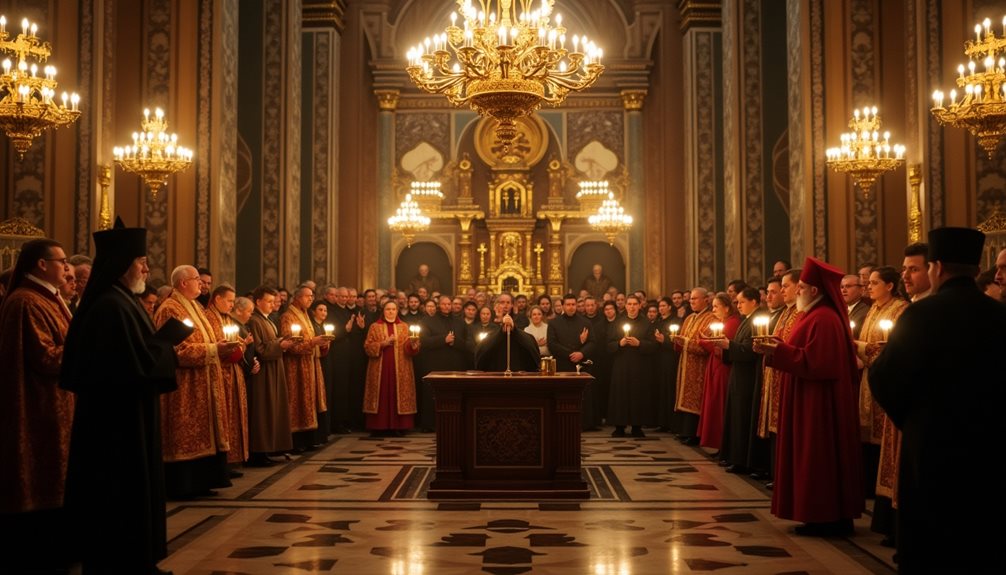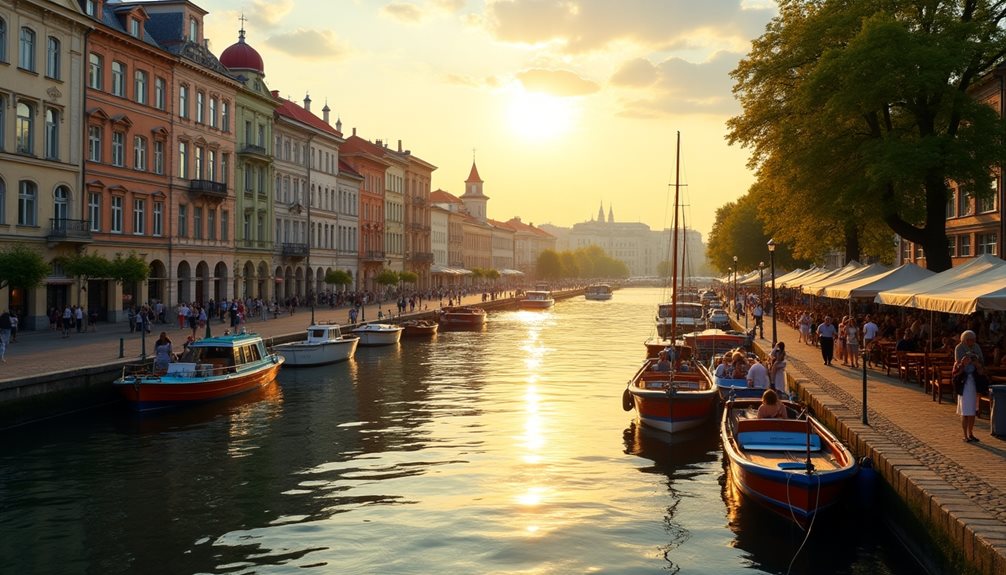Leo Tolstoy was one of Russia’s most famous writers and a member of the noble class. Despite his success and status, he struggled with many personal problems and the expectations placed on him by society. One night, he made a surprising choice: he left his family estate in the middle of the night to find peace and solitude. This decision was more than just leaving a place—it was Tolstoy breaking free from the roles and pressures that had controlled his life. By looking at why he did this, we can better understand the conflict between what people expect from us and what we really want inside. Still, the exact reasons why Tolstoy sought solitude remain deeply connected to big questions about life and meanin
Tolstoy’s Struggle With Fame and Family

Leo Tolstoy, one of the greatest writers in world literature, experienced a deep and ongoing struggle between his immense literary fame and his personal life, particularly involving his family. Although his novels such as War and Peace and Anna Karenina brought him worldwide recognition, this fame became a source of serious inner conflict. Tolstoy yearned for a simple, autonomous life free from public demands, yet his celebrity status made this almost impossible.
At the heart of Tolstoy’s struggle were complicated family relationships. Tolstoy came from Russian aristocracy, and his family had their own expectations and interests, especially concerning the control of his literary works and legacy. His wife, Sophia Tolstaya, played a significant role in managing his writings and personal affairs. Their marriage was often difficult, marked by disagreements over money, the publication of his works, and Tolstoy’s radical spiritual ideas that rejected wealth and social status.
Tolstoy’s famous moral and philosophical transformations only intensified these tensions. In his later years, he adopted a form of Christian anarchism, advocating for pacifism, simplicity, and rejection of private property. This put him at odds with his aristocratic lifestyle and his family members who depended on the estate’s wealth and social standing. The family’s control over his memoirs and manuscripts led to disputes and even legal battles after his death, as different members wanted to shape how Tolstoy would be remembered.
His struggle highlights a broader problem faced by many public figures: balancing personal identity with external pressures from fame, societal expectations, and family obligations. Tolstoy’s life shows how the demands of public admiration can clash with private desires for peace and self-determination, often resulting in profound personal turmoil.
Tolstoy’s Influence on Russian Society and Culture
Leo Tolstoy was more than just a literary figure; he was a social and moral force whose ideas resonated deeply across Russia and beyond. His writings and personal philosophy challenged the established social order, confronting issues of inequality, spirituality, and the role of the aristocracy in a rapidly changing world. Tolstoy’s critiques of wealth and power struck a chord with many Russians, especially peasants and intellectuals seeking reform.
His ideas about nonviolence and Christian anarchism influenced prominent figures such as Mahatma Gandhi and Martin Luther King Jr., highlighting his global cultural legacy. In Russia, Tolstoy’s calls for simplicity and ethical living inspired movements dedicated to education, pacifism, and social justice. This made him both a beloved figure among reformers and a controversial one among conservative elites.
The societal tensions that Tolstoy embodied were mirrored in the political climate of early 20th-century Russia—a time marked by unrest, revolution, and a questioning of imperial authority. His personal rebellion against aristocratic privilege thus also symbolized a broader cultural shift toward modernity and democratization.
The Burden of Public Scrutiny
Leo Tolstoy, one of the greatest literary figures in history, found himself under an intense, unyielding spotlight that transformed his life into a public spectacle. From the moment he gained international fame with works like War and Peace and Anna Karenina, countless eyes and voices fixated on every aspect of his existence. This scrutiny blurred the lines between his role as a public intellectual and his private life, making it increasingly difficult for him to maintain personal boundaries.
Tolstoy’s every action, statement, and even personal belief was dissected through the relentless lens of public opinion. Unlike typical celebrities whose scrutiny often focuses on entertainment or appearance, Tolstoy faced pressures fueled by the moral and philosophical weight of his writings. As a thinker who advocated radical ideas about nonviolence, asceticism, and social justice, his personal choices were closely examined to see if they aligned with his public teachings. This intense examination created a double bind: any perceived inconsistency between his life and ideals was harshly criticized, while conformity offered no relief from public gaze.
Literary criticism only added to this burden. Critics and readers often conflated Tolstoy’s private life with his philosophical and artistic ideals, constructing a narrative that sometimes overshadowed the complexity of his thoughts. For example, his decision to renounce his aristocratic privileges and embrace a simple peasant lifestyle was widely reported but frequently misunderstood or sensationalized. This intrusive narrative ignored the nuances of his spiritual journey and instead focused on scandal or contradiction, feeding a cycle of public fascination and judgment.
The continuous invasion of his privacy deeply affected Tolstoy. He became increasingly uncomfortable with fame, which conflicted with his earnest desire for simplicity and spiritual peace. His later years were marked by efforts to escape the pressure, including attempts to live more modestly and even plans to leave his family estate to wander as a wandering ascetic. The famous episode of Tolstoy fleeing his home at the age of 82, only to fall ill and die at a remote railway station, symbolizes the extreme toll that public scrutiny had taken on his personal freedom.
Ultimately, the burden of constant observation and criticism became an insurmountable barrier to Tolstoy’s pursuit of solitude and inner peace. His life serves as a poignant example of how public fame can intrude upon and complicate the most private aspects of a person’s existence, especially when that person stands as both an artist and a moral authority.
The Night of the Secret Departure
The unrelenting pressures of public scrutiny left Leo Tolstoy with very few options to reclaim his autonomy in the final days of his life. On the night of November 10, 1910, he made a secret departure from his family estate, a decision motivated by a deep and complex desire to escape the overwhelming demands of fame, societal expectations, and intense familial conflict. This departure was not simply an act of leaving a place; it was a deliberate symbolic break from the roles and responsibilities imposed upon him by both his family and society.
Tolstoy’s life had been marked by a powerful inner conflict between his philosophical beliefs and the realities of his social standing. As one of the most celebrated literary figures in the world, he was constantly under public scrutiny. However, within his personal life, he struggled with tension and disagreements, especially concerning the management of his estate and the control over his literary works. The midnight departure was an act of reclaiming control—his attempt to assert agency over his own destiny, away from the suffocating expectations of others.
Under the cover of darkness, Tolstoy sought not only physical solitude but also spiritual and psychological space to confront his own mortality. He wanted to distance himself from relentless attention and intrusion, hoping to find peace in isolation. Yet, this act also laid bare the profound tension between his yearning for privacy and the inescapable reach of his public persona. Despite his efforts to vanish quietly, news of his departure spread quickly, turning what was meant to be a private retreat into a public spectacle.
Seeking Refuge in Monasteries
In his quest for solitude, Tolstoy turned to monasteries as potential sanctuaries away from the chaos of public life and family strife. His brief stay at Shamordino Monastery exemplifies this search. Known for its devotion to simplicity, contemplation, and charitable work—particularly with disabled women—the convent represented a structured environment where Tolstoy hoped to find respite from worldly troubles.
Monasteries have historically been places dedicated to silence, reflection, and spiritual renewal—an ideal setting for someone searching for meaning and peace. For Tolstoy, whose later writings were deeply spiritual and critical of materialism and institutional religion alike, the monastery symbolized a possible refuge where he could reconcile his complex relationship with faith and society.
However, even here, Tolstoy’s celebrity status undermined the sanctuary’s quietude. Visitors, journalists, and admirers relentlessly followed him, intruding on the very peace he sought. This intrusion highlights a poignant irony: institutions designed for retreat and reflection were unable to shield him from public fascination. His experience at Shamordino reveals the difficulties of seeking true solitude in a world where fame blurs the lines between public figure and private individual.
The Symbolism of Tolstoy’s Flight in Russian Culture
Tolstoy’s secret departure from his home resonates deeply with traditional Russian themes of pilgrimage, exile, and spiritual quest. Historical Russian literature and folklore often depict heroes who leave behind their familiar worlds to seek truth or redemption in solitude or wilderness. In this light, Tolstoy’s flight can be seen as a modern echo of these age-old motifs—a final journey not just away from family and fame but toward an existential reckoning.
Moreover, his choice to seek refuge in religious institutions ties into Russia’s complex relationship with Orthodoxy. While Tolstoy rejected many formal aspects of organized religion, he remained profoundly spiritual. His tensions with the church mirrored larger debates in Russian society about faith, modernity, and authority.
Tolstoy’s flight thus serves as a powerful symbol of the individual’s struggle to find meaning amid societal expectations, making his story compelling not only as biography but also as a reflection of enduring Russian cultural narratives.
The Final Journey and Legacy

Tolstoy’s final journey was marked by a painful confrontation with both physical decline and persistent public intrusion. Despite worsening health, he remained acutely aware of the complexities surrounding his legacy—caught between conflicting family interests over his estate and works, and an insatiable public fascination with his life.
His death at Astapovo railway station became a moment charged with symbolic meaning: it was both a personal retreat and an unavoidable public event. The station itself transformed into a place of pilgrimage, drawing crowds including ordinary citizens, writers, officials, and journalists eager to witness the end of a literary giant.
This final chapter in Tolstoy’s life underscores the profound challenge he faced in reconciling his desire for peace with the lasting impact of his moral and literary legacy. His death did not mark an end to public attention but rather intensified it, cementing his place as both a revered thinker and a figure trapped by his own fame.
The circumstances surrounding his final days also sparked debates about the ownership of his works; Tolstoy had famously renounced copyright over his writings, advocating for free distribution—a stance that complicated his family’s efforts to control his literary estate.
Ultimately, Tolstoy’s final journey underscored the challenges of reconciling a profound quest for solitude with the enduring weight of literary and moral legacy.




